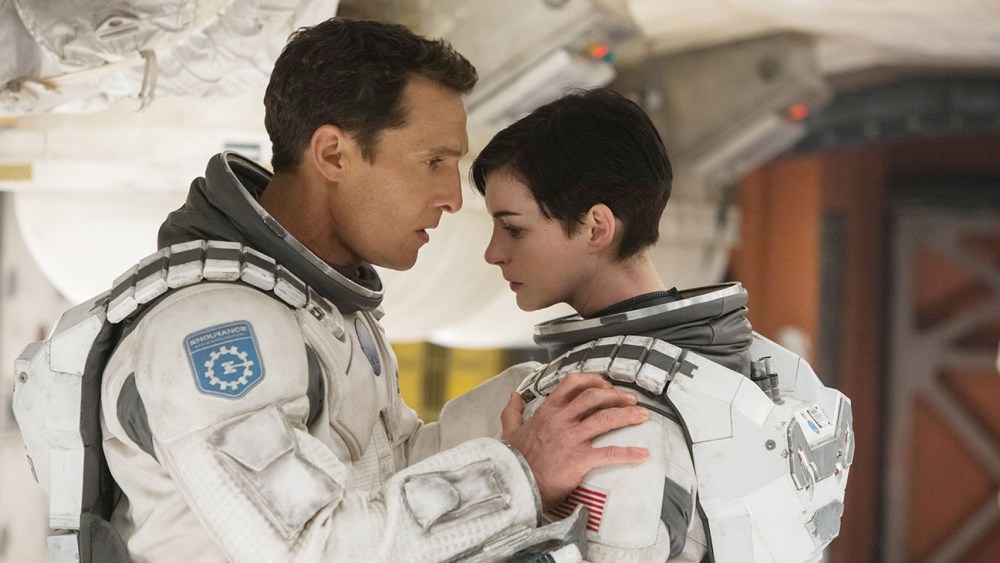In the realm of cinematic achievements, few films resonate as powerfully as Christopher Nolan’s “Interstellar”. First released in 2014, this film redefined the boundaries of science fiction, blending visually stunning space exploration with deeply human themes. Marking its 10th anniversary, Nolan’s masterpiece is set to return to theaters with an exclusive Imax rerelease, offering audiences another chance to experience its breathtaking scale and intricate storytelling as intended by its visionary director.
The Impression and Legacy of ‘Interstellar’
Since its release, “Interstellar” has cemented itself as a touchstone of modern science fiction. The film not only captivated audiences with its storyline but also received critical acclaim, earning several Oscar nominations and winning the Academy Award for Best Visual Effects. It grossed over $700 million worldwide, showcasing its broad appeal and securing a firm place in the pantheon of sci-fi epics.
Its influence has rippled through the genre, inspiring a wave of filmmakers and prompting more serious treatments of space exploration themes in popular media. Notably, “Interstellar” stirred interest in theoretical physics, popularizing concepts like wormholes and relativity. Its blend of scientific precision and emotional storytelling created a template that many subsequent space dramas have tried to emulate.
What Makes ‘Interstellar’ Stand Out?
Interstellar stands out for several reasons, from its intricate plot and emotional depth to its groundbreaking special effects and commitment to scientific accuracy.
At its core, the film tells the story of Cooper (played by Matthew McConaughey), a former NASA pilot who ventures into a wormhole to find a new habitable planet for humanity, leaving behind his young daughter, Murphy. The film’s exploration of themes like love, sacrifice, and the passage of time resonated with audiences worldwide.
A significant factor contributing to Interstellar’s authenticity was the involvement of Nobel laureate physicist Kip Thorne. Thorne’s expertise ensured that the portrayal of black holes and time dilation was rooted in scientific theory. The iconic visuals of Gargantua, the supermassive black hole, were not just visually stunning but also mathematically accurate, inspiring real-world discussions among physicists.
Moreover, Hans Zimmer’s score elevated the film, infusing scenes with an emotional urgency that has become synonymous with the film’s legacy. His use of pipe organs and minimalist melodies emphasized the grandeur and solitude of space, making “Interstellar” as much an auditory experience as a visual one.
The 10th Anniversary Imax Rerelease: What to Expect
The rerelease of “Interstellar” in Imax is a fitting tribute to its enduring legacy. Set to premiere in select theaters, this event gives both dedicated fans and newcomers an opportunity to view the film in the immersive format that Nolan designed it for. The Imax format is known for its towering screens and enhanced sound quality, elements that perfectly complement the film’s ambitious visuals and layered soundtrack.
Nolan’s films have often been lauded for their cinematic grandeur, and the director’s insistence on practical effects and high-resolution film stock is best appreciated on an Imax screen. Audiences can expect crystal-clear imagery that magnifies the colossal scale of space, making the journey through wormholes and across distant galaxies all the more captivating.
The anticipation for this rerelease has sparked excitement across social media, where fans are reminiscing about their first experience with the film and expressing eagerness to rediscover its intricate plot and groundbreaking visuals. For many, this event is not just a rewatch but a nostalgic return to the moment they first glimpsed Nolan’s vision of the cosmos.
The Cast That Made It Unforgettable
The success of “Interstellar” owes much to its star-studded cast, whose performances brought gravity and authenticity to the film’s ambitious narrative. Matthew McConaughey delivered a compelling portrayal of Cooper, capturing the character’s complex emotions as he grappled with hope, loss, and the weight of humanity’s future. Anne Hathaway’s role as Dr. Amelia Brand added depth and a poignant perspective on love’s place in the grand scheme of survival.
Jessica Chastain’s portrayal of the adult Murphy added a crucial emotional layer, as her character’s struggle with her father’s departure underscores one of the film’s most profound themes: the intersection of time and family bonds. Matt Damon’s surprising appearance as Dr. Mann brought a stark reminder of the psychological challenges of space travel and human selfishness when pushed to the brink.
Interviews with the cast have shed light on the intense preparation and commitment required for their roles. McConaughey, in particular, has spoken about how he approached the role not just as an adventure but as a deeply personal story of a father’s love.
Christopher Nolan’s Vision and the Making of a Masterpiece
Christopher Nolan’s meticulous approach to filmmaking is legendary, and *Interstellar* was no exception. His commitment to blending practical effects with CGI wherever possible lent the film a sense of realism that resonates even today. For instance, many scenes featuring space ships were created using large-scale models, and the zero-gravity sequences were performed using sophisticated wire work.
Nolan’s collaboration with Kip Thorne was pivotal in ensuring that *Interstellar* stayed true to the science it presented. Thorne’s input helped Nolan weave scientific concepts seamlessly into the narrative, making them both accessible and compelling. This approach not only elevated the film’s realism but also distinguished it from other sci-fi movies that leaned more heavily on speculative fiction.
The Scientific Insights and Legacy Beyond Film
The scientific community has also recognized “Interstellar” for its accurate depictions of complex theories. Gargantua’s visualization became an illustrative example of how theoretical astrophysics could translate onto the big screen, sparking interest in black hole studies and leading to discussions in academic circles.
Moreover, the film’s treatment of time dilation—a concept where time moves differently based on gravity—brought mainstream attention to an idea that is typically confined to textbooks and lectures. The scene on the water planet, where every hour equates to seven Earth years, was a powerful dramatization that left a lasting impression on audiences and highlighted the unforgiving nature of space travel.
A decade after its initial release, “Interstellar” remains as influential and awe-inspiring as ever. The 10th-anniversary Imax rerelease is not just a celebration of its success but a reaffirmation of its place in cinematic history. For those who experienced it in 2014, this rerelease is a chance to relive the grandeur; for new viewers, it’s an invitation to embark on an unparalleled journey through space, time, and the depths of the human spirit.
No comments yet.







